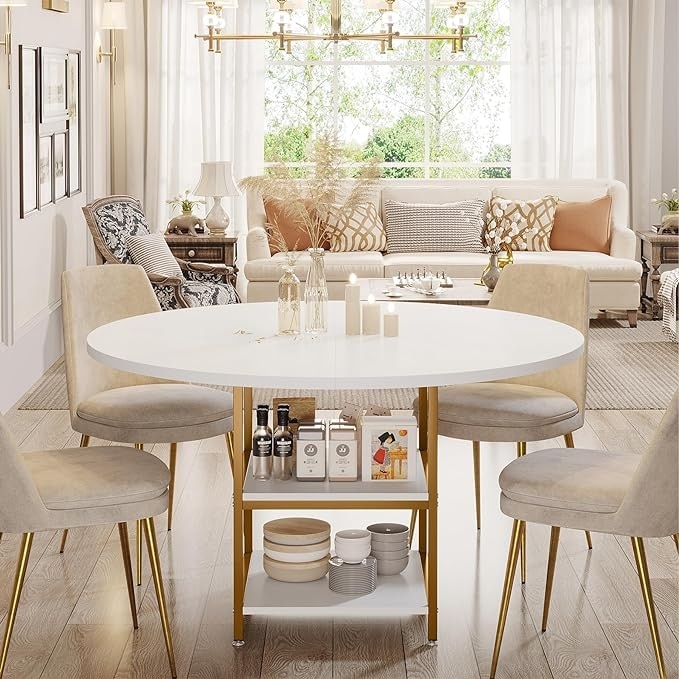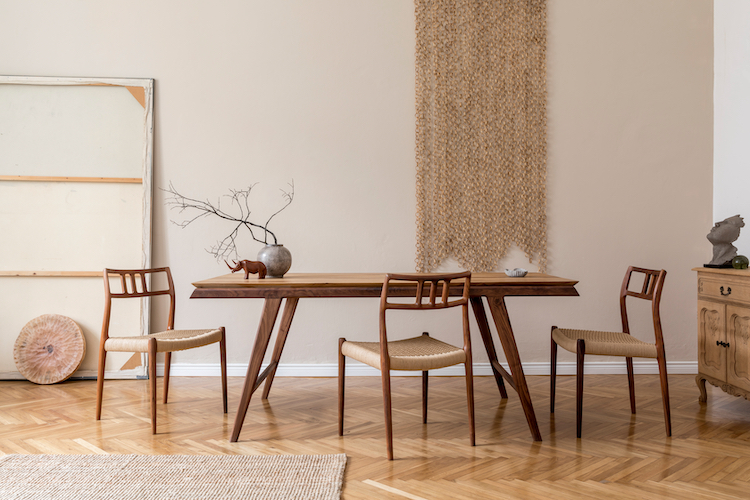From Traditional to Modern: Discover the Perfect Dining-room Table Legs for Your Style
The choice of dining-room table legs plays an essential duty in specifying the overall character of your space, linking the gap in between typical craftsmanship and modern appearances. While classic layouts such as cabriole and turned legs evoke a sense of classic elegance, modern designs like barrette and geometric options offer an opportunity for striking visual passion. Examining the best balance in between these designs requires a nuanced understanding of your existing décor and individual preference. As you think about these elements, the concern continues to be: exactly how can you flawlessly incorporate these diverse leg designs to produce an unified eating experience?
Recognizing Table Leg Styles
The selection of dining area table leg styles can substantially affect both the aesthetics and functionality of the area. Each leg style adds distinct visual components and sensible attributes, satisfying varied design preferences and use needs. Understanding these styles is essential for selecting the right table that lines up with your overall indoor layout vision.
As an example, tapered legs provide a tidy, timeless appearance that can boost a space's elegance, while pedestal bases offer security and optimize legroom, making them suitable for smaller rooms. Hairpin legs, a trademark of mid-century contemporary style, present a commercial style, enabling a ventilated, open feel. In a similar way, trestle legs evoke rustic beauty, offering durable support and a sense of eternity.
Wood legs can bring heat and texture, whereas steel options usually convey a streamlined, modern vibe. Ultimately, recognizing table leg designs is vital for producing a cohesive eating location that reflects personal design while ensuring practicality and convenience.
Typical Table Leg Options
When selecting dining area table legs, traditional choices often symbolize classic beauty and workmanship. These layouts mirror an abundant heritage and a commitment to high quality, making them excellent for those who appreciate classic looks.
Among the most renowned conventional leg styles is the cabriole leg, defined by its elegant bent form. This layout often features decorative makings and is most generally located in Queen Anne and Chippendale furnishings. An additional popular choice is the transformed leg, which boasts a series of smooth, rounded shapes that supply a classic appearance while maintaining stability.
Additionally, the straight leg, while basic, uses a sturdy and unadorned framework that can mix seamlessly with a variety of tabletop designs. For those drawn to ornate detailing, claw-and-ball feet legs stimulate a sense of grandeur and can work as a stunning focal factor in any type of dining area.
Last but not least, stand bases, although not strictly legs, provide a different conventional choice that enables enough legroom and can be perfectly sculpted. Each of these typical leg styles adds to the total setting of an eating area, marrying function with visual appeal.

Modern Table Leg Layouts
Modern table leg designs supply a varied series of designs that emphasize tidy lines and innovative products. These designs usually focus on functionality while acting as striking focal factors within a dining area. Minimal appearances prevail, with legs crafted from materials such as metal, glass, and crafted wood, Discover More Here which add to a contemporary and ventilated feeling.
One prominent layout is the hairpin leg, defined by its slim, tapered structure that offers security without frustrating the tabletop (dining room table legs). This style is typically located in browse around this site mid-century contemporary furniture and can easily enhance different eating table forms. One more trend is using geometric forms, where legs might take on asymmetrical or angular types, including aesthetic interest and a touch of creativity

Blending Styles for Unique Spaces
Often, homeowners seek to develop one-of-a-kind eating areas that reflect their personal design by mixing numerous style aspects. This method allows for the unification of varied aesthetics, causing an unified yet unique environment. For example, coupling a rustic wood table with streamlined, contemporary metal legs can develop a distinctive contrast that raises the area's overall allure.
Additionally, incorporating vintage table legs with contemporary table tops can stimulate a feeling of history while keeping a modern perceptiveness. Such combinations not just display private preference however additionally motivate creative thinking, permitting home owners to curate a space that really feels both personal and inviting.
Shade plays a vital function in this blending procedure; selecting table legs that match or contrast with the existing color pattern can enhance aesthetic interest. As an example, whitewashed legs can soften the daring of a dark table surface, developing a balanced visual.
Tips for Selecting the Right Legs
Selecting the right table legs is important for accomplishing both performance and visual appeal in your dining room. Begin by considering the general design of your room. Traditional settings benefit from legs that include detailed carvings or turned layouts, while modern spaces may require streamlined, minimal styles.
Next, examine the elevation and security of the legs. dining room table legs. Basic dining tables vary in between 28 to 30 inches in elevation, so make sure the legs enhance this dimension for convenience. In addition, robust products, such as wood or steel, can boost stability and long life
Examine the leg form as well-- choices include directly, tapered, or pedestal layouts. Straight legs provide a traditional look, while tapered legs can add a touch of beauty. Pedestal bases give adequate legroom and are suitable for smaller rooms.
Verdict
In summary, choosing the suitable eating area table legs calls for cautious factor to consider of both conventional and modern designs. Typical alternatives such as cabriole and transformed legs offer classic style, while modern-day styles like hairpin and geometric forms provide a modern touch. By integrating leg design, height, and material with the general design, a cohesive and inviting ambience can be accomplished. Eventually, the chosen table legs should reflect the wanted aesthetic, recommended you read enhancing the eating experience within the area.
The range of dining area table leg styles can significantly influence both the aesthetic appeals and functionality of the room. Ultimately, recognizing table leg styles is important for creating a cohesive eating area that mirrors personal style while making certain usefulness and convenience.One of the most legendary standard leg designs is the cabriole leg, characterized by its graceful rounded form. Straight legs provide a timeless look, while tapered legs can add a touch of style.In summary, choosing the ideal dining area table legs needs careful consideration of both contemporary and standard styles.